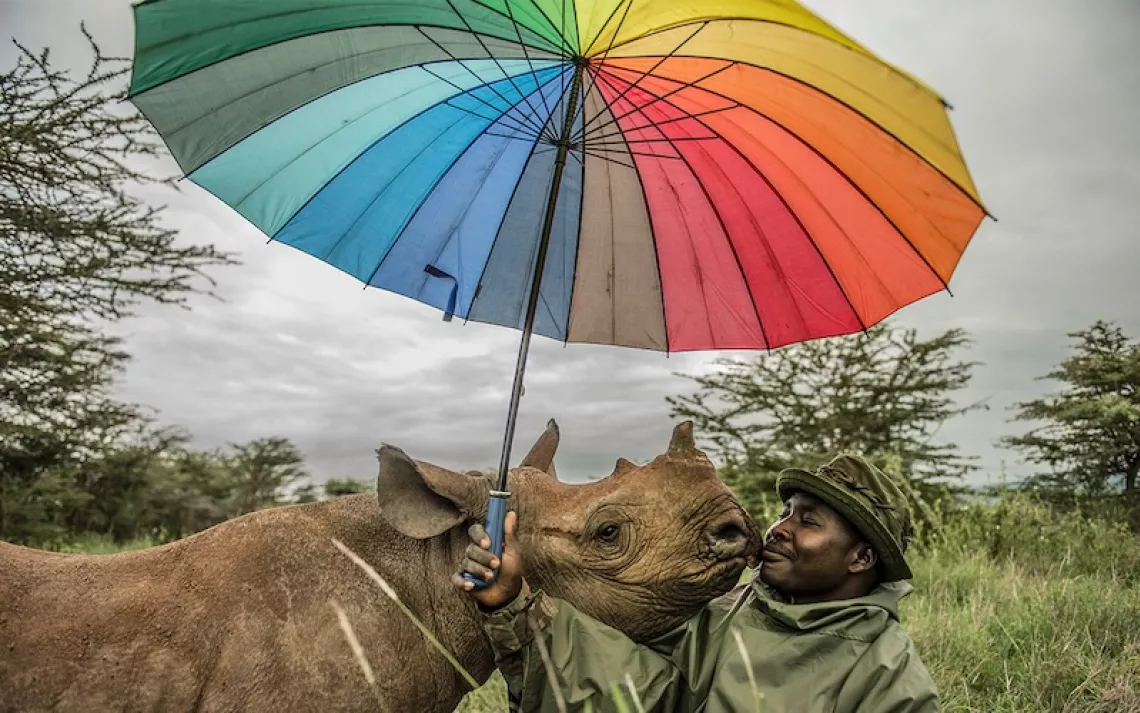Time to Fix the Population Fixation
Sierra examines gender equity and the ecological crisis

A couple of years ago, Sierra published a feature about Constance Okollet, a farmer in eastern Uganda who was leading her community's efforts to address climate change ("The Mobilizers," November/December 2017). With very few resources, she and other local women were planting trees, improving farming techniques, and developing sustainable businesses. After the story came out, some readers expressed dismay at our decision to profile Okollet. Why? Because she is the mother of seven children.
These readers were understandably worried about the increasing number of people on the planet and the burden it places on natural ecosystems. In their view, because Okollet had so many children, she was doing more harm than good. But the tendency of some environmentalists to blame individuals—in particular, women in developing countries—for the number of children they have is problematic.
This mind-set doesn't take into account the fact that wealthier nations with smaller populations produce more greenhouse gas emissions per capita than poorer nations with larger populations. The annual carbon footprint of the average US resident—if they own a car, eat meat, heat their home with fossil fuels, and/or fly somewhere for vacation—is significantly larger (as much as 15 times larger) than that of Okollet and her children combined.
Then there's the fact that millions of women around the world still don't have control over whether, when, or how often they become pregnant. That's a human rights travesty, and it's also bad for the environment. Pointing the finger at women for this is essentially blaming the victim.
The thinking of most demographers has evolved since the population-bomb mentality of the 1960s and '70s, when people feared that exploding numbers would lead to ecological collapse and famine. In 1994, feminists and population experts came together for a pivotal UN conference, during which they developed a framework for population policy centered on the rights of women and universal access to family planning. Studies show that education, economic opportunity, health care, and reproductive choice improve the lives of women and their families, which in turn helps communities; such gains are also good for the planet.
But myopic, outdated ideas continue to creep into public discourse about population. In their most extreme forms, they manifest in racist, xenophobic, and even violent ways. The killers behind the mass shootings in New Zealand and El Paso, Texas, referenced overpopulation and environmental degradation as reasons to target immigrants, many of whom are fleeing the devastating impacts of climate change in their home countries. Such eco-fascist rhetoric has no place in the environmental movement.
We are publishing this themed issue on the intersection between gender equity and population with the hope of sparking a conversation that is better informed and also female-led—which is why we enlisted an all-women roster of writers, photographers, and illustrators.
Without a doubt, a growing population contributes to the ecological degradation of our planet. But the data on population trends is more nuanced than many environmentalists realize (see "Peak Baby Is Closer Than You Think"). According to the United Nations, the human population will peak around 2100 at 10.9 billion, but the rate of growth is declining as women are having half as many children as they did just 50 years ago. Education, in particular, helps ensure that girls and women are able to make their own reproductive choices. I report on how the Center for Girls' Education in northern Nigeria is helping impoverished girls develop a sense of agency—and, in the process, increasing their communities' resiliency in the face of climate change.
We can't take progress for granted. In "Mandatory Maternity," Summer Brennan chronicles the Trump administration's efforts to restrict access to contraception here in the United States, while Karen J. Coates describes the human suffering caused by the administration's expansion of the "global gag rule," which withholds US financial assistance from any foreign organization that provides abortion services, referrals, or counseling ("Choke Hold on Contraception").
And no discussion about population is complete without considering the problem of overconsumption, which is why Sierra convened a panel of public intellectuals to discuss the interplay among wealth, inequality, and resource depletion. The panelists suggest that when we fixate on the problem of too many people, we overlook the outsize contribution of the wealthiest few to the climate crisis and the extinction emergency. As Katharine Wilkinson puts it, "some people are consuming wildly more and wildly differently than others."
As environmentalists, we need to strive for equity as passionately as we do for environmental sustainability, for the sake of human dignity as well as the long-term health of the planet. What might that look like? We are finding out the answer in real time with the global climate strikes, a movement led predominantly by teenage girls who, as they rally the world to address climate change, are grounding their activism in a call for justice. Around the world, young women are forging a path to a better future. Let's follow their lead.
This article appeared in the November/December 2019 edition with the headline "Time to Fix the Population Fixation."
 The Magazine of The Sierra Club
The Magazine of The Sierra Club



